Results from the 6th Annual B2B Marketing Data Report
B2B organizations are turning to data to accelerate the buying journey and achieve meaningful growth. That should come as no surprise.
Over the past few years, Dun & Bradstreet has routinely taken the pulse of B2B sales and marketing professionals and discovered that data was at the heart of their go-to-market activities. Spoiler alert: This year is no different. Data is unanimously viewed as being the catalyst for driving an effective sales and marketing strategy and improving business performance overall.
What does come as a surprise is how a lack of confidence in B2B data quality is impacting the way in which businesses leverage (or don’t leverage) the most fundamental sales and marketing initiatives. Even the most buzzworthy sales and marketing strategies, such as account-based marketing (ABM) and content personalization, may not be as prevalent as one might think.
After surveying more than 250 B2B professionals in businesses of all sizes across numerous industries, Dun & Bradstreet uncovered some key findings about the B2B sales and marketing landscape that tells us a lot about the current state of B2B data.
Data Quality Is a Critical Success Factor for B2B Sales & Marketing (and Becoming Increasingly Important Year Over Year)
B2B marketers unanimously agree that quality data empowers them to deliver the right message to customers at just the right time. It allows marketers to know what customers want, when they want it, and how they have interacted with the company in the past. To achieve this, it is essential to get the fundamentals right to build a foundation that generates actionable insights which will make a difference in the marketplace. Exceed expectations, and customers will shout your praises from the social media rooftops. Flub it, and the bad experience can spread across the digital landscape like wildfire.
The pressure is on. As such, B2B firms recognize the importance of data quality in guiding their sales and marketing decisions. And it’s becoming increasingly significant year over year.
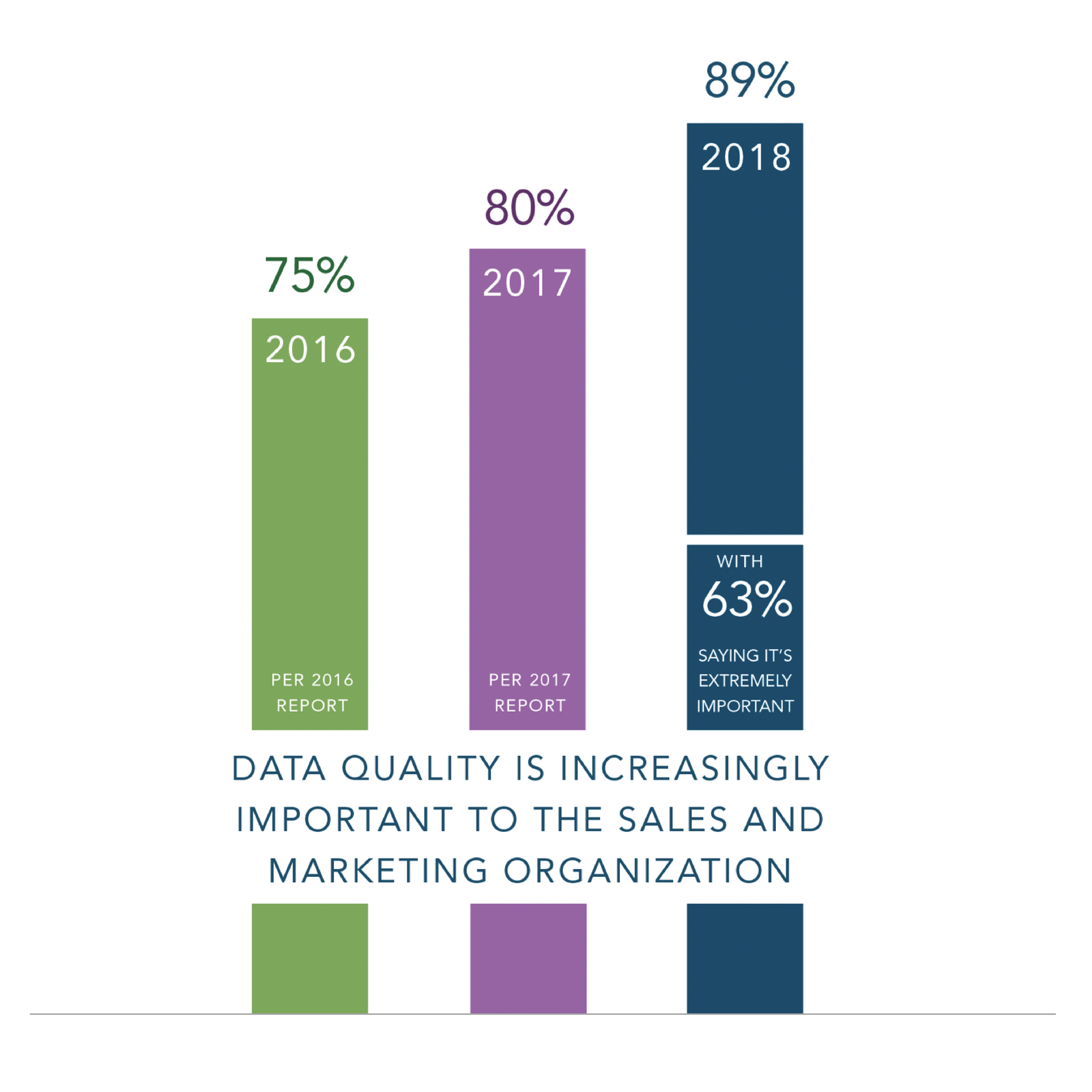
Confidence in Data Quality Has Reached a New Low
Despite the fact that B2B firms understand the critical role data plays in driving successful B2B sales and marketing campaigns, only half of respondents expressed confidence in the quality of their data – with only 11 percent expressing extreme confidence.
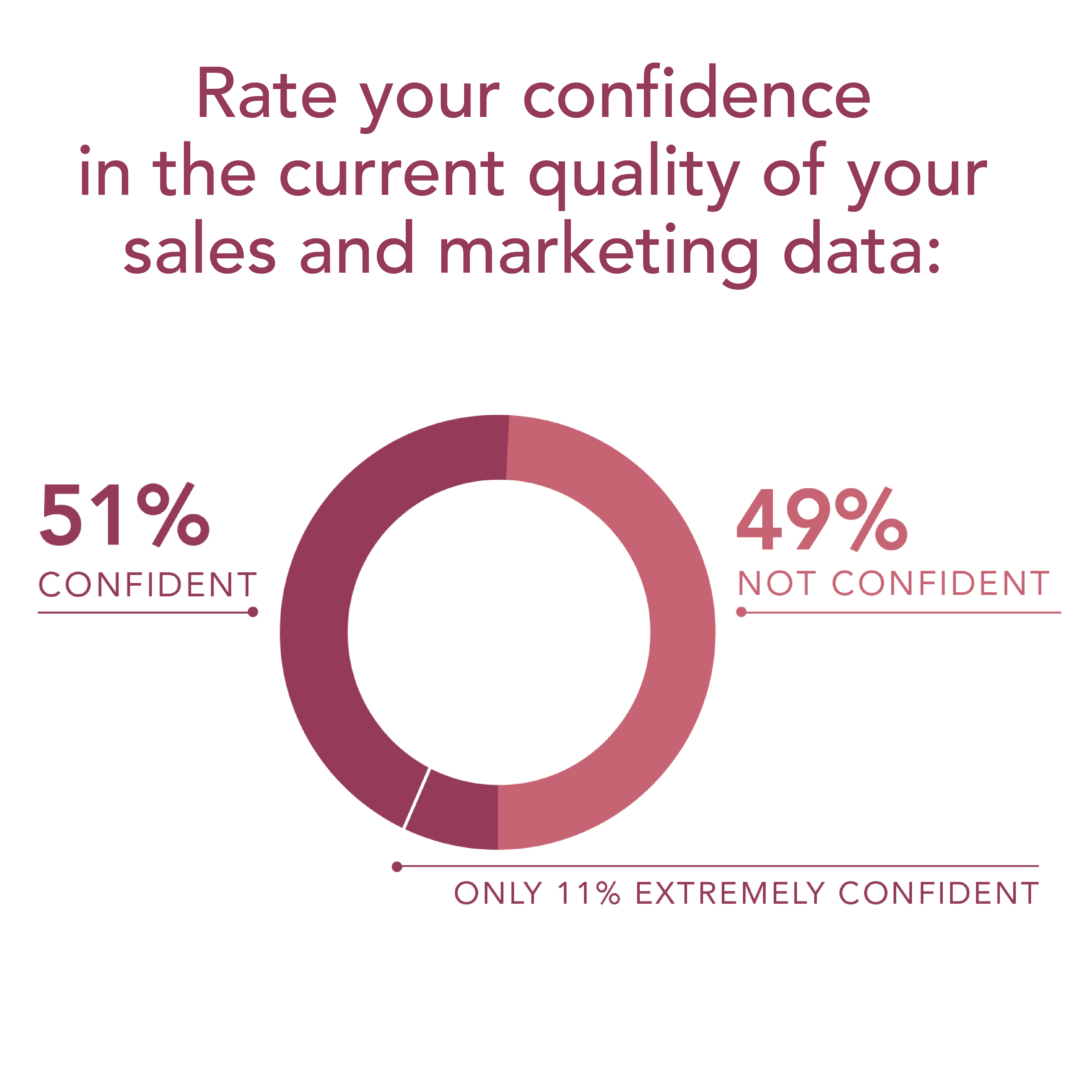
While it’s certainly encouraging to see at least half of B2B companies expressing optimism about the data they are working with, that number is actually lower than the previous year’s, when 75 percent of survey respondents expressed confidence in the quality of their data. The big dip in this year’s confidence assessment seems to have impacted other areas of sales and marketing.
A Lack of Confidence Is Hindering Many Data-Driven Strategies
Many industry reports peg ABM as being one of the most popular B2B tactics, as it’s said to yield higher returns than any other marketing investment. However, just over a third of our respondents said ABM was currently part of their go-to-market strategy.
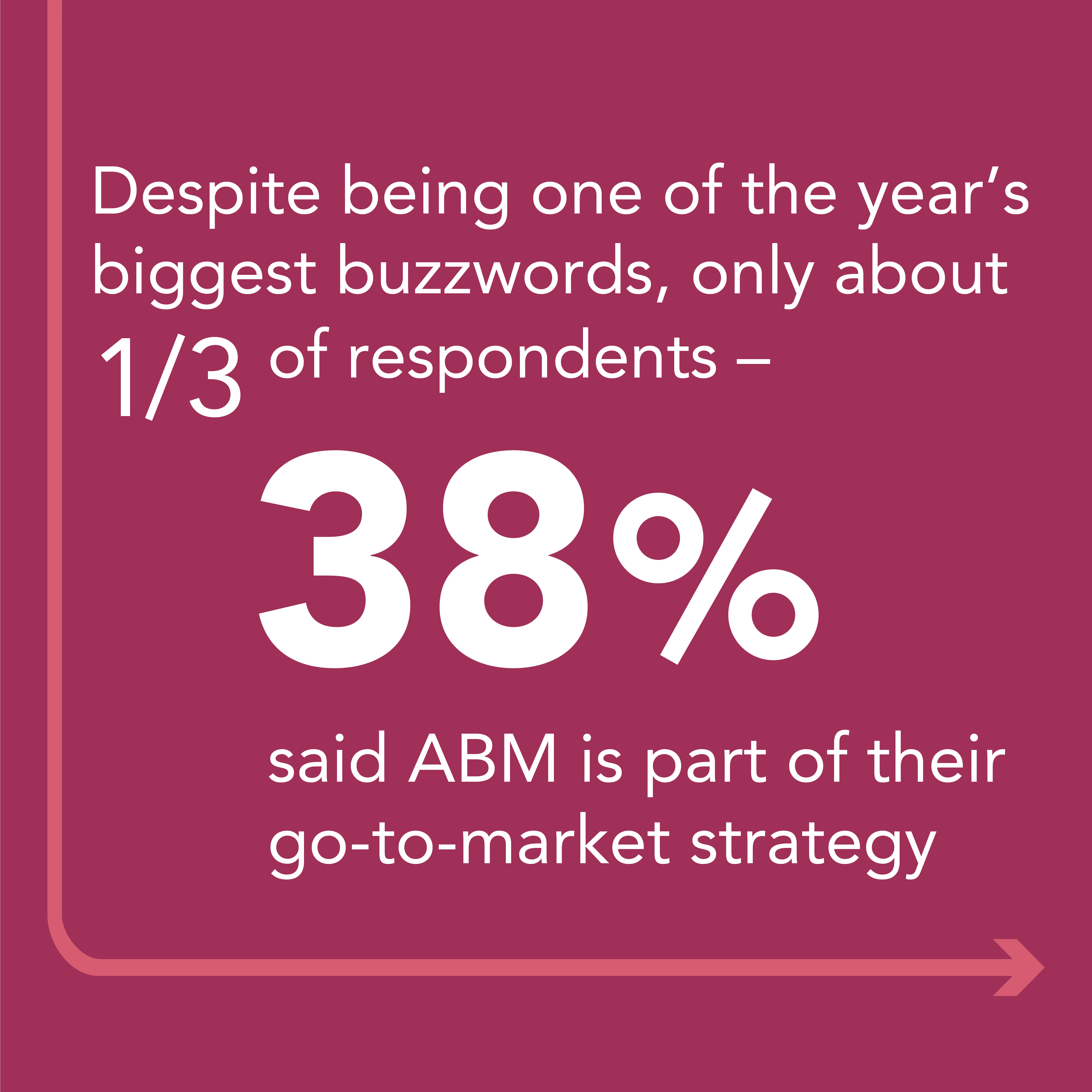
The reality is that a lot of organizations are still behind on this evolution in marketing. This is partly because a move to ABM is rooted in more than a change in technology.
First, it requires quality data – specifically, strong firmographic and demographic data – to identify key accounts and targets, reach them across a variety of channels, and deliver relevant content that accelerates their buyers’ journey.
It also requires a shift from leads-based/MQL (marketing qualified leads) thinking to a narrower engagement of key accounts. Your sales team will need to understand that their pipeline is going to be reduced – sometimes significantly – depending on the scope of the ABM program. This means a change in resourcing, measurement, and compensation. At the end of the day, while ABM can produce huge numbers, it can also require a significant restructuring of how sales and marketing teams interact and work together to achieve this common goal.
That said, it is still surprising to learn that ABM is not currently being embraced and employed by more B2B marketers. But given the challenges B2B organizations say they have with their data and resources, maybe it should have been expected.
Data Is Viewed as the Fuel for Driving ABM Campaigns
For the B2B companies confidently executing ABM, data seemingly plays a role in all the related tactics that make up the strategy. From conversing with customers online to meeting them face to face, data guides every step of the outreach and planning from start to finish.
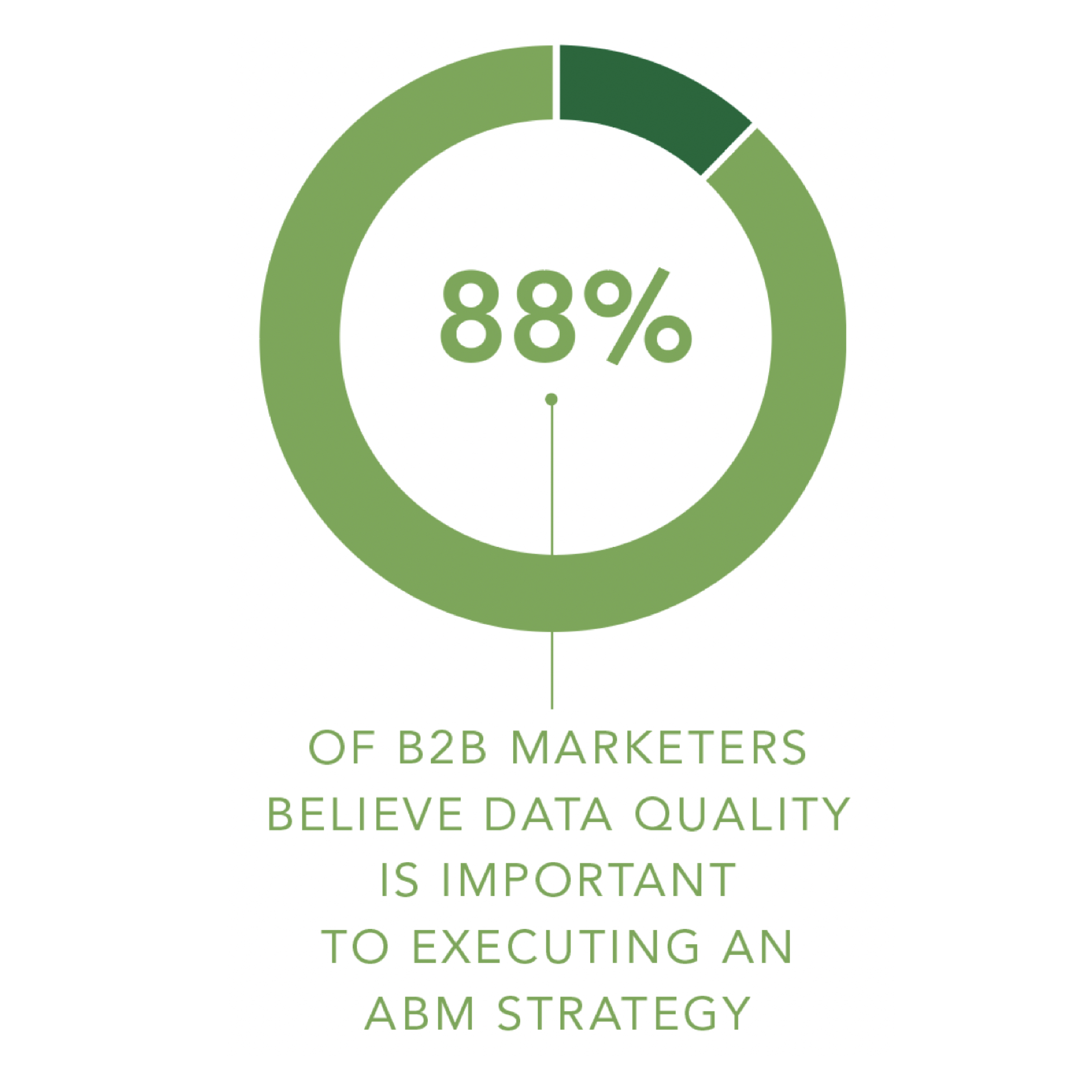
Although ABM is an exciting prospect for many B2B companies, it seems most respondents need to get their data in order before they can commit to executing such a massive shift in their go-to-market strategy and in how they measure success. ABM is not easy. Targeting specific accounts and decision-makers requires a coordinated, synchronized effort across multiple channels. It requires the right data and measurement systems – and alignment at the executive level between sales and marketing. An overwhelming number of B2B organizations clearly recognize this and are therefore somewhat cautious in their adoption of this strategy.
B2B Marketers Struggle to Integrate Their Data Across the Enterprise
For many, CRMs are the epicenter for data collection that fuels revenue operations. And despite the massive investments companies have been making in these platforms over the past decade, nearly two-thirds of respondents claim to be novice or intermediate level at integrating data with their CRM. A mere 13 percent claimed to be advanced.
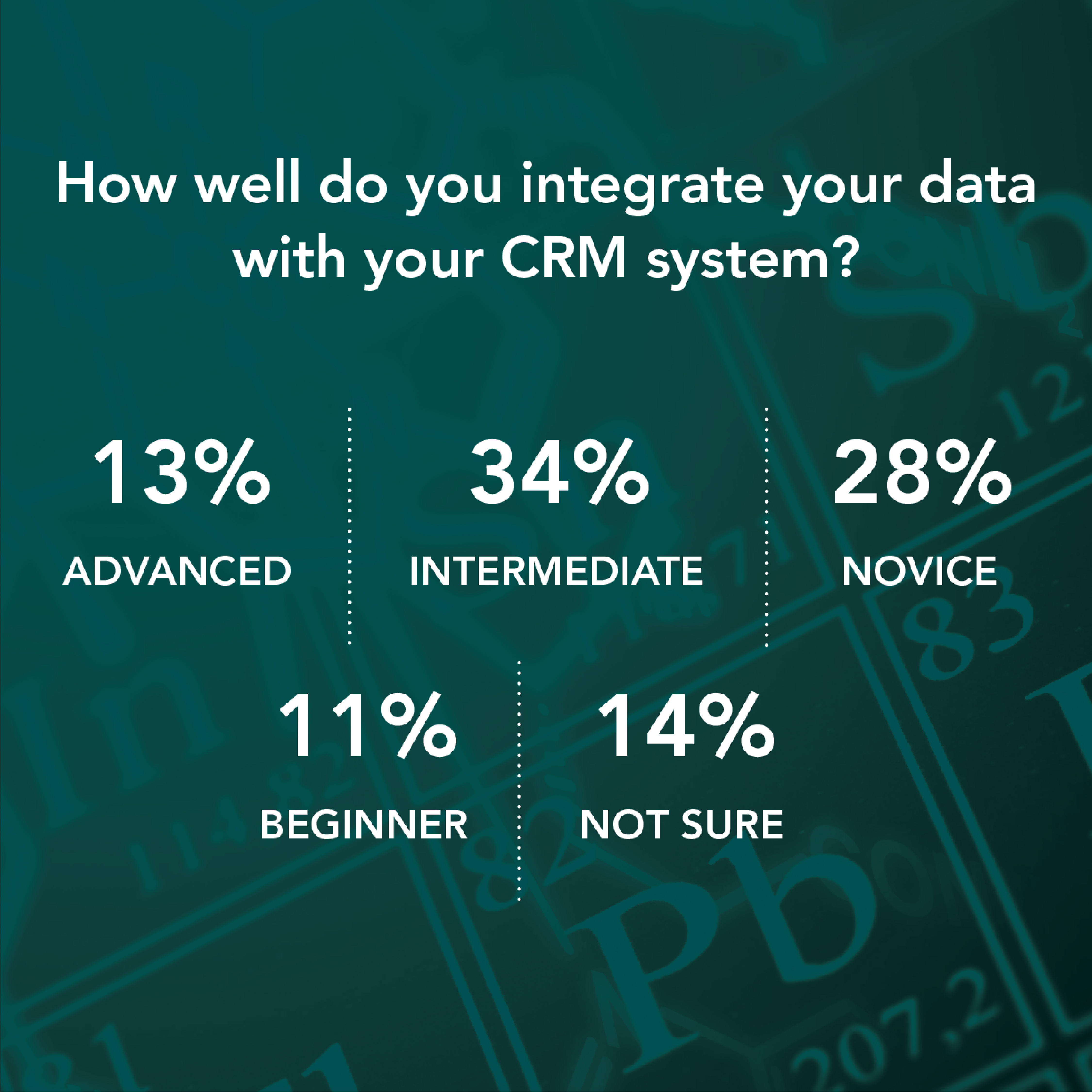
Sales teams typically have their preferred CRM or sales force automation (SFA) system to manage data, while marketing may prefer another platform (or multiple platforms) that leverages customer data differently. Instead of getting a complete and accurate view of customers or prospects, companies enact strategies that are often informed by contradictory, misleading, or altogether wrong information. This siloed nature of enterprise-wide data management can often foul up operations and decision-making; so much so, that data is not always trusted to be the guiding factor in key business decisions. In fact, according to a recent Forrester study, only half of B2B marketing and sales decisions are made using data.
Conclusion
As we’ve learned from this year’s report, B2B organizations recognize that data is the cornerstone of their revenue operations. But the road to success is paved with many challenges.
For B2B organizations to truly succeed, there must be a thoughtful plan and concerted effort to improve data quality. It’s certainly not easy, but making that commitment is the first step in achieving what we hope will be skyrocketing confidence in data by the time we conduct next year’s B2B Marketing Data Report. B2B marketers need the right mix of completeness, accuracy, depth of insight, and timeliness to deliver the identity and intelligence that leads to good decisions.
Want to uncover more findings from the sixth annual B2B Data Report? Be sure to download the full study to discover the biggest obstacles and opportunities that are shaping the B2B sales and marketing landscape in 2018 and beyond. You’ll also learn how to formulate the right equation to achieve better data outcomes.
Download Report






